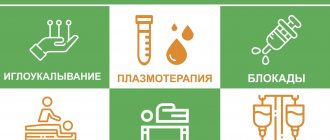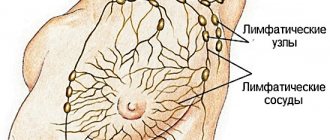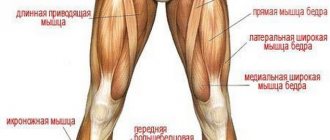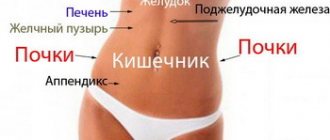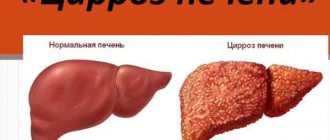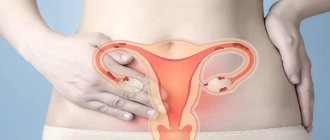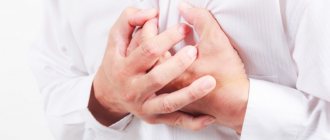Author: Vereskun E. A. Expert: Trubnikov V. I.
Complications of lumbago 606
Normally, a person should not experience any unpleasant sensations in the spinal column when performing any physiological movements. Pain in the tailbone is a sign of the disease. What pathologies can manifest themselves in this way will be discussed in this article. You will also learn which doctor you should contact for medical care.
Any pain in the tailbone, pulling, stabbing, aching, shooting, is a reason to urgently consult a doctor. There are no exceptions to this rule. Because the cauda equina nerve plexus is located in this area. It consists of the terminal filament of the spinal cord, so when it is compressed, paralysis of the lower extremities is possible. Also, in advanced cases, the functioning of the internal organs of the abdominal cavity and small pelvis is disrupted in patients.
The second important point is that the coccyx is connected to the sacrum using a joint. There is no intervertebral disc here. Any traumatic impact can cause this joint to begin to collapse. Deforming osteoarthritis of the coccygeal-sacral joint is a severe pathology; it creates serious difficulties in performing movements.
The anatomy of this part of the spinal column is quite simple, but at the same time it is of significant importance for the human condition and his functional capabilities. The anterior and posterior spinal ligaments are attached to the coccyx area. They fix the stable position of the vertebral bodies, preventing them from moving relative to each other in the anterior and posterior directions. If the coccyx is affected, the attachment point of the anterior or posterior longitudinal ligament may become loose. This will provoke instability in the position of all vertebral bodies in the lumbar, thoracic and cervical region. If the attachment point of the long ligament is completely ruptured, a person may lose the ability to walk independently and even perform simple movements.
Meanwhile, it is pain in the coccyx area that is the first sign of fiber separation at the attachment point of the ligament. You should be especially careful if pain appears when the person’s body position changes. For example, if pain appears in the tailbone when standing up, but there was no traumatic impact, then this may be a sign of ligamentous and tendon dislocation. This is also how joint damage and a number of other serious pathologies can manifest themselves. Therefore, do not hesitate to consult a doctor.
You will not be able to objectively determine what is causing your tailbone pain when sitting, since a number of special studies are required to make an accurate diagnosis. First of all, an examination by a vertebrologist or orthopedist is necessary.
We recommend finding a manual therapy clinic near your place of residence. Experienced doctors work there and their goal is not to return people to work as quickly as possible. They are not bound by medical and economic standards in their work, so their actions are aimed at restoring the health of the spinal column, and not at masking unpleasant symptoms.
In a city clinic, when a patient consults a doctor, the first priority is to return to work as quickly as possible. Those. the doctor sets himself the task of ensuring that the patient is at least temporarily pain-free and can return to his workplace within the period dictated by medical and economic standards. Nobody pays attention to the acceleration of the process of tissue destruction.
Carefully choose a doctor to whom you entrust your health. Weigh the pros and cons carefully before giving preference to one or another method of treating the identified disease.
Characteristics and types of pain in the coccyx
The coccyx or coccygeal bone is the lower part of the spinal column, consisting of several vertebrae.
He is involved in many processes:
- serves as the basis for attaching the ligaments of the reproductive and genitourinary system;
- supports the anal muscles that regulate the functions of the anus and distal colon;
- strengthens the nerve fibers of the gluteal muscle and hip extensors.
The tailbone is involved in the correct distribution of the load in different body positions. The vertebrae included in its structure do not have intervertebral discs. In women, they minimally grow together and can expand in the last trimester of pregnancy and during delivery.
Depending on the intensity, pain in the tailbone can be of several types:
- weak aching;
- sharp and sharp when changing body posture;
- strong.
Spasms can radiate to the back, lower back or perineum, and spread in waves along the lower abdomen. In some diseases, discomfort appears during bowel movements or physical activity.
When diagnosing, doctors divide pain in the coccyx area into 2 types:
- Anorectal. The lesion is felt inside the anus, extending from the bottom up to the spine. The cause is hidden inflammation, infection or intestinal dysfunction.
- Coccydynia. Painful sensations are provoked by the tailbone due to injury, damage to the vertebrae or the formation of a growth. Often the problem is neuralgic in nature and appears after 40–45 years. The spasm occurs when sitting or suddenly rising from a chair.
A detailed description of the nature of the pain helps doctors correctly identify the underlying disease and select quality treatment.
Prevention
Prevention of coccialgia is not always possible, since in half of the cases the phenomenon is caused by spontaneous injuries.
There are several ways to prevent the development of coccydynia:
- Avoiding injuries (falls, bruises).
- Treating acute diseases in a timely manner, preventing them from becoming chronic.
- Paying attention to health while at home and carrying out professional activities. It is advisable to use soft pillows and comfortable chairs for sedentary work.
It is equally important to follow your doctor’s recommendations regarding postoperative rehabilitation. Interventions for proctitis, spinal problems, and anal fissures require special care during the recovery period. Neglecting the doctor’s advice contributes to the formation of fistulas and more difficult healing of the postoperative wound. Coccialgia always accompanies this process, although its development, as well as subsequent symptoms, can be avoided.
Causes of pain in the coccyx in women
In most diagnosed cases, pain in the coccyx area is reflected. Pain occurs when the nerve endings that transmit impulses are damaged and become inflamed.
Therefore, it is possible to correctly diagnose and find the cause only after a full examination and consultation with highly specialized specialists. It is necessary to pay attention to symptoms and sensations when changing body position.
In a sitting position
The tailbone hurts (the reasons for women when sitting can be found by analyzing the position of the body) during monotonous work at a desk or monitor, when it is difficult to control posture.
Prolonged maintenance of a static posture provokes blood stagnation and hidden swelling, disrupting the nutrition of the lower spine. Aching pain often bothers office workers, cyclists, and car drivers.
My tailbone hurts. The reasons may lie in maintaining a static pose for a long time.
A more dangerous cause of pain in a sitting position is the formation of a dermoid or coccygeal cyst (teratoma) on the tailbone.
Benign formation in 98% of cases is congenital and does not bother the patient for many years. Accidental injury or hypothermia provokes inflammation that produces a burning sensation. In such a situation, urgent removal is necessary: discomfort may indicate degeneration into a malignant tumor.
When getting up
Other likely causes of pain when standing up include:
- pelvic adhesions or inflamed scars after gynecological operations;
- chronic constipation;
- impaired blood supply to the lower intestine;
- inflammation of internal organs with the formation of fistulas and abscesses.
Unpleasant sensations when standing up often bother women after childbirth. This is due to the discrepancy of the pelvic bones, does not require treatment and goes away on its own after a few weeks.
Kneeling in the leg
Sharp pain radiating to the leg often indicates a pinched sciatic nerve (piriformis syndrome). Discomfort appears with prolonged sitting and increases when walking or climbing stairs. The problem lies in the formation of an intervertebral hernia, severe injuries or fractures, and occurs with obesity or prolonged sedentary work.
Characteristic symptoms:
- increased pain when lifting small weights, shopping bags;
- muscle weakness;
- numbness;
- tingling.
The tailbone hurts (the reasons for sitting in women should be sought in the development of osteochondrosis, arthrosis or arthritis) mainly after 55 years during menopause: changes in hormonal levels lead to thinning of bone tissue and degenerative changes in its structure.
Giving into the buttocks
This type of pain is typical for internal or external hemorrhoids. The disease is associated with impaired blood circulation in the anus, leading to the formation of lumps on the walls of blood vessels. The problem is accompanied by painful itching and burning in the anus, and the appearance of strings or blood clots in the stool.
If spasms radiate to the buttock, it is necessary to exclude anorectal inflammation and tumors, proctitis, paraproctitis or sigmoid. With benign or malignant formations, a feeling of fullness occurs. Complications include intestinal obstruction, chronic anemia, severe constipation with bleeding.
Radiating to the groin
If coccydynia radiates to the groin when bending or sitting, the cause may be hidden in inflammation of the woman’s reproductive organs, the bladder.
For example:
- endometriosis;
- adnexitis;
- polycystic disease;
- urethritis;
- salpingitis.
In 25% of women, it is difficult to diagnose the cause of pain in the tailbone. Doctors attribute the problem to the anatomical structure, congenital bone pathologies, and a wider location of the pelvic day.
Treatment
The unpleasant sensation can be eliminated only by eliminating the root cause of this symptom. To understand the clinical picture, the doctor clarifies the location of the pain, to which areas it spreads, and what signs accompany the discomfort. It is important for a specialist to understand the time of day when the pain is most intense and whether the sensation can be minimized by changing body position.
If the appearance of coccydynia is not associated with the influence of certain factors, or a specific pathology has not been identified, symptomatic treatment is carried out. In other words, each individual symptom is eliminated using medication. These include pain, insomnia, indigestion, and tension in the sacral region.
If a certain disease is detected, treatment must be comprehensive. A conservative approach is acceptable in the initial, uncomplicated stages. Surgical methods are indicated only in severe clinical cases, if medication is ineffective.
Exploratory survey
At the initial stage, the affected area is examined and the patient is interviewed. Then the doctor directs you to undergo an X-ray examination, MRI (in complex clinical cases).
Main aspects of treatment
If coccydynia is caused by uncomplicated clinical cases, pain relief is administered, but first of all, the patient needs to be in a state of rest. Bed rest and normalization of nutrition are recommended (it is important to avoid the development of constipation, which will only increase discomfort). To relieve pain and relieve inflammation, analgesic drugs are prescribed. But it is additionally necessary to carry out procedures and actions aimed at improving blood circulation within the affected area.
Treatment of pregnant women differs according to a number of criteria. Many manipulations and 99% of drugs are prohibited for use due to safety for the health of the expectant mother and fetus. Diagnosis of coccydynia in pregnant women also has a lot of limitations - radiation imaging methods are prohibited.
Anesthesia
At the initial stage of discomfort, suppositories with analgesic properties are used. Injection of drugs is indicated for pain of high intensity. To minimize discomfort, non-steroidal anti-inflammatory drugs are prescribed - Ibuprofen, Voltaren, Diclofenac. If they do not improve well-being, novocaine blockades are performed. The essence of the procedure is that novocaine is injected into the tissues of the painful area of the body. Additionally, hormones are administered to enhance the analgesic effect of the novocaine blockade.
Manual therapy, massage, acupuncture
Manual therapy involves performing therapeutic manipulations with your hands. If it is necessary to eliminate coccydynia, digital massage of the rectum is effective. It is aimed at relaxing its muscle part, which has a positive effect on the patient’s well-being and allows one to ease or completely eliminate tension in the problem area of the body.
Massage helps normalize blood circulation, prevents blood stagnation, and relieves muscle spasms.
Acupuncture is a non-traditional medical technique; before performing it, you must obtain the approval of your doctor. The procedure does not relieve the root cause of the disease, but helps eliminate pain. To eliminate the unpleasant sensation, the specialist applies biologically active glasses to the patient’s sacrococcygeal region. Despite its effectiveness and pain relief, acupuncture does not replace basic therapeutic appointments.
Physiotherapy
Complements basic medications. Physiotherapeutic methods help relieve inflammation and the accompanying symptoms - pain, spasms, difficulties in assuming a comfortable body position. Effective directions are exposure to ultrasound, UHF, the use of paraffin applications, the use of laser for therapeutic purposes.
Physiotherapy
In an uncomplicated condition accompanied by coccydynia, the patient is allowed physical activity. But they must be dosed, correctly composed, without sudden movements and tension.
Optimal actions of physical therapy:
- Starting position – lying on your back. The patient bends his knees, then spreads them apart.
- The palms of the hands are placed on the inner surface of the knees.
- The patient should try to bring his knees together, but at the same time resist this action.
The number of repetitions should not exceed 12 times. The duration of the therapeutic course is determined by the doctor, based on the root cause of coccydynia.
Surgical treatment
Diseases of the coccyx are treated less frequently surgically than conservatively. Resection is an operation to remove the bones of the coccyx. The basis for intervention is the lack of a positive effect from conservative treatment and the following factors:
- Coccyx cyst (epithelial coccygeal duct).
- Complicated osteochondrosis of the lumbosacral spine.
- The presence of orthopedic defects of the sacral pelvic region, which negatively affect the patient’s quality of life. The reason is impaired motor activity, almost continuous pain.
Intervention is indicated for a fracture of this area or dislocation. Also, the option of performing an operation is considered if the patient has pathological mobility of the coccyx structures. The phenomenon is caused by degeneration and dystrophy of tissues of the lumbosacral spine.
Contraindications for surgery are blood clotting disorders, cancer, heart and/or liver failure.
Which doctor is best to see?
Any painful sensations are a reason to contact a specialist. At the initial stage, many diseases respond well to treatment and do not require long-term recovery. Modern diagnostic methods make it possible to make a diagnosis quickly and practically painlessly, minimizing medical errors and inaccuracies in tests.
Basic inspection
The primary examination and history taking is carried out by a therapist.
To determine the type and nature of pain, he may recommend:
- general and clinical blood test;
- MRI;
- computed tomography of the pelvic bones and joints;
- rectal examination of the intestines (colonoscopy);
- Ultrasound of the pelvic organs.
If signs of cancer or inflammatory diseases appear, the woman is referred to a specialist.
Proctologist
The doctor helps to cope with the pain of hemorrhoids and any inflammation of the anus. In case of sudden shooting, a rectal examination is necessary using palpation or special devices equipped with a camera. This helps to detect colitis, polyps in the sigmoid colon, and purulent fistulas in a timely manner.
Neuropathologist and vertebrologist
Often, treatment of coccygeal pain by a traumatologist is accompanied by a visit to a neurologist. If nerve endings are pinched, it helps select anti-inflammatory drugs and controls the functionality of the spine. The diseases threaten loss of mobility and therefore require additional examinations using x-rays.
Surgeon
If the pain is severe, the help of a surgeon may be required. Acute proctitis or thrombosis of the hemorrhoid cannot be cured with medication. The specialist removes malignant tumors and cysts that cause discomfort in the tailbone area.
Gynecologist
If you suspect endometriosis, polycystic disease, or inflammation of the fallopian tubes, a woman should consult a gynecologist. The doctor prescribes additional tests, ultrasound of the ovaries and uterine cavity to rule out polyps, fibroids or fibroids. His help is required if pain in the tailbone appears during pregnancy, after natural childbirth.
Traumatologist
If cracks, thorns or signs of osteochondrosis are detected in the photographs, the help of a traumatologist is necessary.
The doctor selects treatment if the cause of pain in the tailbone is the following diseases:
- inflammation of the nerve endings of the cauda equina
- arthrosis;
- pinched sciatic nerve;
- osteochondrosis.
The specialist excludes malignant bone tumors, intervertebral hernias, and protrusions.
Gastroenterologist
Unpleasant sensations caused by constipation or diarrhea require treatment by a gastroenterologist. He selects a special diet and medications that improve peristalsis and normalize intestinal microflora.
Establishing diagnosis
All patients who experience pain in the coccygeal bone should know what to do next. First you need to contact a vertebrologist, osteopath, chiropractor, traumatologist, or surgeon. You may also need to consult a proctologist, gynecologist, or urologist.
After an injury to the lower spine, an x-ray should be taken, and the doctor will also palpate the damaged area.
For nagging pain, which is accompanied by cephalgia and numbness of the extremities, the following studies are prescribed:
- X-rays can reveal diseases of the spinal column (intervertebral hernia, osteochondrosis).
- Myelography using a contrast solution helps identify spinal hernias.
- CT or MRI are used to evaluate the structure of the lumbar vertebrae as well as the surrounding tissue.
Severe pain that does not disappear and spreads to the leg is associated with damage to nerve bundles and muscles and requires the following studies:
- Visual examination, history taking.
- Tests to identify neurological disorders in which the patient assumes various positions and describes his sensations to the doctor.
- An ultrasound examination of the pelvic organs is carried out to assess their size and identify adhesions.
- X-ray or CT, MRI to identify the exact causes of neurological disorders.
Electromyography will help determine muscle damage. Additionally, the blood can be tested for syphilis, which in advanced cases is accompanied by neurological disorders.
If the presence of adhesions is suspected after surgery, ultrasound, CT or MRI are prescribed. If coccygeal pain is accompanied by articular pathologies or symptoms of a cyst, then radiography and arthroscopy are performed. For pain in the tailbone, constipation, gastroscopy, examination of stool and blood are indicated. If discomfort in the area of the coccygeal bone is combined with hemorrhoids, then the proctologist examines the perineum and anus. You may also need a stool test, colonoscopy, or sigmoidoscopy of the intestines. In case of prolapse of the pelvic organs, an ultrasound is prescribed. If the cause of coccygeal pain is a disease of the genitourinary organs, then a urine test, tests for genital infections, and instrumental examinations of the pelvic organs are performed.
When is urgent medical attention needed?
The tailbone hurts (the reasons for sitting in women should not be sought independently) rarely in case of serious pathologies.
Immediate consultation with a doctor is required if the following symptoms occur:
- sharp shooting pains;
- increased body temperature;
- deterioration in coordination of movements;
- swelling;
- loss of sensation in the feet;
- bloody discharge when urinating or defecating.
Deterioration of the condition may indicate the development of purulent paraproctitis, strangulation of the hemorrhoid, or metastasis of the tumor in the pelvis.
The most important
If you feel pain in your tailbone that does not go away within 5 days, consult a doctor. The fact is that this symptom can hide quite dangerous health problems. Self-medication or late consultation with a doctor increases the likelihood of complications of the disease that caused the discomfort. Then it will be much more difficult to get rid of the pain. Typically, coccygeal pain is treated with conservative methods: medications, exercise therapy, manual therapy, massage, physiotherapy, and folk remedies. If the above methods are ineffective, then surgical treatment is performed. To avoid this symptom, lead a moderately active lifestyle, watch your posture, and promptly treat diseases that can cause coccygeal pain.
Drug treatment
Drugs are selected depending on the diagnosis. In case of inflammation, it is necessary to relieve acute pain and reduce sensitivity with the help of non-steroidal drugs. If the cause of discomfort is indigestion, the patient is recommended to use laxatives to improve bowel movements. For injuries, local anesthetics in the form of ointments and creams are more effective.
Nonsteroidal anti-inflammatory drugs
To reduce pain and inflammation, doctors select non-steroidal anti-inflammatory drugs. They are recommended if the cause of discomfort lies in exacerbation of sciatica, arthritis, osteochondrosis, or back injury.
| Name of the drug | Directions for use and dosage |
| Ibuprofen | For acute pain, 300–400 mg 3 times a day (no more than 1600–2000 mg). The maximum course is 7 days. |
| Diclofenac | Injections of 75 mg 2 times a day. Tablets for no more than 7 days, 50 mg 3 times a day. |
| Ketoprofen | In tablets, take 100 mg 3 times a day (duration no more than 6 days). Intramuscular injections - 1 ampoule only for the relief of acute pain. |
| Paracetamol | Depending on the diagnosis, take 100–250 mg of the drug 3 times a day. The treatment period is 5–7 days. |
Non-steroidal drugs can be selected in the form of rectal suppositories (Analdim, Diclofenac, Nurofen). They do not affect the gastric mucosa and have minimal contraindications.
Laxatives
Coccydynia in chronic constipation resolves when the underlying cause is eliminated.
Recommended for treatment:
- Microclysters Microlax and Norgalax. They are used as an “ambulance” for heaviness in the intestines, causing the urge to defecate within 20–30 minutes.
- Drops with laxative effect Picolax, Guttalax, Regulax. Apply 1-2 times a day, 15-20 drops.
- Osmotic preparations for softening fecal stones Forlax, Sorbitol.
To restore microflora and prevent constipation, medications with bifidobacteria (Acipol, Linex) are used.
Local anesthetics
For arthrosis and osteochondrosis, pain can be relieved using local anesthetics.
They must be applied and rubbed into the tailbone area with a special applicator:
- Diclofenac;
- Voltaren gel;
- Capsicam;
- Chondroxide.
No less effective are ointments made on a natural basis: royal jelly, bee or snake venom (Traumel, Apisatron).
Special pillows
If a woman has severe pain in her tailbone from sitting at her desk for a long time, doctors recommend purchasing a special orthopedic pillow. It redistributes the load more evenly, relieves pressure on the pelvic bones, and alleviates discomfort. It has the shape of a torus, square or rectangle.
Among the advantages of the device:
- made from safe materials (latex, polyurethane foam);
- designed for computer and standard chairs, car seats;
- easy to wash and clean.
Pillows are recommended for the prevention of exacerbations of hemorrhoids, bruises of the tailbone, and recovery after surgery on the hip joint. They relieve tone in case of inflammation of the sigmoid colon, polyps, and diseases of the reproductive system.
Action tactics
Patients are interested in how to treat coccygeal pain. The treatment regimen depends on the cause of the discomfort.
As a rule, coccydynia is treated with conservative methods:
- Painkillers.
- Physiotherapy.
- Manual influence.
- Physiotherapeutic procedures.
- Massage.
After identifying the causes of pain, the doctor draws up a treatment strategy.
Reference. Surgical intervention for pain in the lower spine is rarely resorted to. The operation is performed only for injuries that cannot be cured with conservative methods. Then the patient is prescribed extirpation, during which the coccygeal bone is removed.
If the tailbone hurts after an injury, then the victim needs to urgently provide first aid:
- Turn the patient onto his stomach so that blood does not rush to the damaged area. This will help reduce the severity of pain and avoid bruising.
- Apply a cold compress to the affected area. You can use cold medicinal herbal decoctions.
- If the tailbone is very painful, then give the victim NSAIDs (non-steroidal anti-inflammatory drugs).
After completing the above steps, hospitalize the patient.
Carefully. For coccygeal pain, it is forbidden to take hot baths or use warming bandages, as the inflammation will intensify. The patient should avoid sudden movements that place stress on the tailbone (running, jumping, strength exercises), prolonged sitting, and sleeping on the back. Also, do not massage this area if it is painful.
The following methods will help relieve pain and inflammation at home:
- The use of medications in the form of tablets, ointments, suppositories, rubs.
- Maintain bed rest, but it is better to sleep on your stomach or side, pulling your legs closer to your chest.
- Using effective folk remedies.
- During remission, it is recommended to perform physical therapy, this will help improve blood circulation and relax spasmodic muscles.
The final decision on the choice of therapy methods is made by the attending physician for each patient separately.
Drug treatment
Treatment of coccydynia is carried out using painkillers, suppositories, ointments, and dressing solutions. However, it is recommended to use all medications only after determining the cause of the pain and the doctor’s approval. If medications are ineffective within 5 days and the pain does not subside, then consultation with a specialist is necessary.
Ibuprofen helps relieve inflammation and pain
The following medications are used to relieve coccygeal pain:
- Ibuprofen, Diclofenac, Ketoprofen, Indomethacin, Naproxen and other NSAIDs in the form of pills, microenemas or rectal suppositories.
- Treat the sore spot with Chlorethyl, which is used for temporary anesthesia.
- Ointments will help relieve pain syndrome: Dolobene, Traumeel S, Levomekol. These drugs help reduce inflammation and pain.
- If your tailbone is bruised, you can use pain-relieving rectal suppositories. Suppositories containing novocaine, ichthyol, and belladonna will help get rid of pain.
If the pain is severe, then the above drugs will not be effective. In such cases, therapeutic blockades are carried out, most often using a solution of novocaine. During the procedure, the doctor injects medication with a syringe into the nerve plexuses around the tailbone.
Physiotherapy
Exercise therapy will help eliminate pain in the tailbone area, but only as part of complex therapy. However, during training it is forbidden to run, jump, walk quickly, strain, or perform jerky movements.
An approximate set of exercises for coccygeal pain:
- Lie on the floor (on the mat), bend your knees, spread them apart. Place your hands on your knees, and then try to connect your legs, overcoming the resistance. Repeat 8 – 12 times.
- Do not change your position, squeeze the ball with your knees, place your hands on your stomach. Squeeze the ball for 5 – 8 seconds, while squeezing your stomach with your hands as it protrudes. Repeat 8 times with a break of a few seconds.
- Stay in the same position, now squeeze the ball between your feet. Squeeze it for 5 – 8 seconds. Perform 8 repetitions intermittently.
- Stay on your back, bend your knees, spread them slightly, lift your buttocks up, hold for 5 seconds. Make sure your buttocks are tensed as you do this. Repeat 8 times with a pause.
While performing the complex, move smoothly and rest between repetitions. To increase the effectiveness of your workout, perform the exercises 2 times a day.
Traditional methods
Coccygeal pain can be treated at home using the following remedies:
- Neodymium ring (ring magnet). Move the device clockwise over the area of the coccygeal bone for 20 minutes, two or three times a day.
- Moisten gauze or a piece of cotton cloth with valerian tincture and apply to the lower spine. Secure the compress with cling film, adhesive tape, and a warm cloth. It is recommended to apply the bandage at night.
- Rub the tailbone area with fir oil three times a day. This procedure will help relieve inflammation and pain.
- Make an iodine net on the affected area, wrap it with a warm cloth before going to bed. Perform the procedure twice or three times a week for 6 to 8 weeks.
- Mix 500 g of blue clay with 1 tsp. apple cider vinegar. Treat the area of the tailbone with the mixture, cover with film, and wrap with a warm cloth. Carry out the procedure before going to bed.
- Mix 300 ml of freshly squeezed radish juice, 100 ml of alcohol, 200 ml of honey. Treat the affected area three times a day. Store the medicinal mixture on the bottom shelf of the refrigerator in a hermetically sealed container.
- Mix ½ g of mumiyo with the same amount of rose oil. Rub the mixture onto the affected area twice a day.
The above recipes can only be used after consulting a doctor.
Other methods for eliminating coccygeal pain
Complex treatment can be supplemented with a finger massage of the pelvic floor muscles (muscles that form the sphincters of the anus and vagina). This procedure is performed if spasm is present.
Manual therapy normalizes blood flow in the coccyx area, improves tissue nutrition, relaxes muscles, and restores mobility
Manual manipulation helps normalize blood circulation in the affected area, improves tissue trophism, relaxes tense muscles, and restores spinal mobility in the coccyx area. To benefit from treatment, you need to find an experienced specialist.
Acupuncture can help reduce coccygeal pain or eliminate it completely.
During complex therapy, physiotherapeutic procedures are used:
- Ultrasound treatment.
- Laser therapy.
- Ultrahigh frequency therapy.
- Galvanization (the effect on the diseased area of a low-strength electric current and voltage through electrodes that are inserted into the anus).
- Diadynamic therapy (electric current treatment with a frequency of 50 – 100 Hz).
- Darsonvalization (exposure to high-frequency pulsed currents).
- Heat treatment (paraffin-ozokerite applications).
- Mud therapy.
The decision on choosing the appropriate technique is made by the doctor.
Physiotherapy
For many pathologies of the coccyx and spine, physiotherapeutic procedures are recommended:
- Darsonvalization. The method involves heating the area with low voltage current. It improves blood circulation, suppresses hidden infections and inflammation. For pain, a course of 20 procedures lasting 15 minutes is required.
- Ultrasound therapy. The painful area is exposed to ultrasound waves for 5–7 minutes. The restoration of nervous and bone tissue is accelerated, and the nutrition of connective cartilage is improved. The course lasts 10–15 sessions.
- Phonophoresis. Using an ultrasonic wave, medications and vitamins penetrate into the tailbone area and relieve pain. A course of 10 procedures helps relieve tension in the back, reduces the manifestation of osteochondrosis and neuralgia.
- Paraffin therapy. Therapeutic paraffin is heated to 55° and applied as a compress. The procedure reduces pain, muscle spasms, and normalizes lymph flow.
For diseases of the nervous system, you can undergo a course of therapeutic massage. The specialist additionally uses anesthetics and natural oils to remove swelling and hypertonicity.
Exercises for the lower back
It is better to combine all the described techniques with physical therapy. If it hurts to sit and get up, then it is not just desirable, but obligatory for the body. Try to perform all exercises on your back slowly, measuredly:
- Lying on your back, squeeze the ball with your feet and straighten your legs. Repeat 6-8 times with an interval of at least 10-15 seconds;
- bend your knees and spread them, lifting your pelvis for 3-5 seconds. The interval and number of repetitions are similar to the first exercise;
- Place your palms on your stomach and hold the ball between your bent knees. Squeeze the ball forcefully for 5-7 seconds.
Pregnant women cannot afford anti-inflammatory medications and powerful painkillers. In such cases, the only option for relief may be a special circle or a soft cushion ball.
When sitting on them, the load on the lower part of the spine is reduced and the woman feels better. In the same way, you can escape from pain in the tip of the tailbone at the beginning of your period.
If you supplement your course of treatment with any medications, consult your doctor so as not to worsen the situation. Move more during the day, walk, do exercises in the morning and very soon your back will stop bothering you.
For more information about the causes of pain in the tailbone and how to treat it, watch the video:
This article has been verified by a current qualified doctor, Konstantin Tishchenko, and can be considered a reliable source of information for site users.
Rate how helpful this article was
3.3 3 people voted, average rating 3.3
Did you like the article? Save it to your wall so you don’t lose it!
Physiotherapy
The exercise therapy complex is prescribed only after acute pain has been relieved. All exercises are developed by a doctor, based on the recommendations of a traumatologist or neurologist. They are aimed at strengthening the muscle corset, relieving strain, and improving blood supply in the pelvis.
After a long sitting position, simple exercises can help relieve discomfort:
- Lying on your back, without haste, pull your legs bent at the knees to your chest 10 times.
- Continuing to lie on your back, you need to bend your lower limbs and clasp them with your hands. You should roll for a minute, stretching your spine.
- Slowly lift your upper body from a lying position.
After performing, you need to lie on your back, place high support under your feet, and relax as much as possible.
Coccydynia - what is it?
The definition has Greek roots, where “coccix” means tailbone, and “odyni” means pain. Occurs as a result of a fall on the buttocks, strong blows to the lower back, any acute injury, osteochondrosis of the spine, dislocations, and fractures of the coccyx. It is necessary to distinguish pseudococcydynia, the etiology of which includes urological, gynecological or proctological diseases.
The appearance of pain is facilitated by pulling the legs towards the chest while sitting on the sofa - sacral landing. The intensity of pain increases with prolonged sitting and sudden rise from a chair or defecation. Standard household or work activities can cause significant discomfort. To alleviate the condition, patients place a soft pillow to prevent spasms of the muscle fibers of the perineum and groin.
Surgical intervention
For severe pain, blockade with Novocaine is indicated. The alcohol composition is injected into the coccyx area using an injection. Its effect is enhanced and prolonged by warming ointments with diclofenac. The manipulation is repeated after 7 days.
Common types of surgery:
- For hemorrhoids and proctitis, removal of inflamed or pinched nodes and blood clots.
- Extirpation of the coccygeal bones in case of destruction of the vertebrae. Under general anesthesia, the affected fragment is cut off without removing the nerve endings.
- Laminectomy for spinal stenosis (the surgeon removes only part of the vertebra that presses on the nerve).
- Radiotomy for neuralgic pain (inflamed or injured nerve roots are removed).
Surgical intervention is used only in situations where drug pain relief does not produce results. Such operations do not require special preparation, and rehabilitation takes no more than 2–4 weeks.
Coccyx cyst
A coccyx cyst is a serious disease characterized by a pathological change in the fiber in the coccyx area, due to which an epithelial-coccygeal tract is formed. The violation belongs to the field of proctological diseases. If the cyst is located close to the anus, then there is a serious threat of developing sepsis due to the penetration of bacteria from the stool into the affected area. The treatment method is selected depending on the degree of damage. The doctor will determine what to do to eliminate the disease. For this reason, it is unacceptable to use folk remedies to treat pain in the tailbone.
© shutterstock
The formation of a coccyx cyst can be triggered by many factors, the main ones being:
- sacral injury;
- lack of physical activity;
- excessive sweating in the gluteal fold area;
- a sharp drop in immunity;
- insufficient hygiene.
The symptoms of the disease are clear and allow you to determine the cause of pain in the tailbone quickly and accurately, which is why treatment begins immediately. The fact that a cyst has occurred is indicated by pain in the coccyx (perhaps the pain will be stronger to the left or right of the coccyx) and the area of the buttocks, swelling of the problem area, ingrowth of hairs into the skin at the site of the cyst, pronounced compaction in the gluteal fold and severe general intoxication of the body. The pain in the tailbone is intense and intensifies with movement and changes in posture.
Treatment of the disease is predominantly surgical . The cyst needs to be removed. The manipulations are carried out under local anesthesia and do not cause severe discomfort to the patient. Complications after surgery develop extremely rarely. The disease is often mistakenly considered not dangerous, but in reality, if it is not treated, complications easily develop that pose a threat to life.
ethnoscience
For pain in the tailbone, you can use traditional methods of treatment:
- Prepare an infusion of 0.5 liters of vegetable oil, 2 tbsp. l mint, handfuls of lavender. The mixture must be kept in the dark for 3 weeks, then rubbed daily into the lower back.
- Make a warm compress from a mixture of essential oils of lavender, fir, tea tree and basil.
- Rub an alcoholic infusion of a mixture of elderberry, willow and oak bark, and licorice root into the skin.
If the tailbone hurts, a woman needs to see a doctor and undergo a pelvic examination. At the initial stage, when sitting, you can get rid of discomfort using traditional methods, the use of physiotherapy and preventive massage. Increasing physical activity and performing special gymnastics at home will help avoid complications for a long time.
Article design: Oleg Lozinsky
How to get rid of pain with the help of medications?
In 90% of cases, it is possible to get rid of the problem with complex and (much less often) symptomatic drug treatment. An x-ray examination is prescribed, anti-inflammatory and painkillers are prescribed.
To relieve pain, take Naproxen or Ibuprofen. For severe pain, the doctor prescribes injections of lidocaine, novocaine or hydrocortisone, Kenalog, Diprospan.
Doctor's advice
Before starting manual therapy, be sure to take an X-ray or MRI of the problem area (coccyx or sacrum), and rule out gynecological and urological pathologies. Trust your body to certified chiropractors of serious medical centers. Treatment by traditional chiropractors is fraught with complications.
Konstantin Tishchenko Orthopedist, Traumatologist
Hydrocortisone ointment combines well with ultrasound treatment. This simultaneously relieves pain in the tailbone and eliminates the very cause of the phenomenon.
Surgeries to remove the rudiment are resorted to only in complex cases of dislocations and fractures that are not amenable to therapeutic intervention.
Pelvic bone cancer
Cancerous lesions of the pelvic bones also lead to a dull pain in the tailbone, and sometimes pain near the tailbone. It is most often secondary and develops due to metastasis of the main tumor formation. In most cases, cancer spreads to the pelvic bones from the pelvic organs, abdominal cavity and soft tissues of the lower body .
In rare cases, pelvic cancer can appear as an independent disease, in which malignant cells develop directly in the bone tissue. The patient may be diagnosed with the following types of disease: osteogenic sarcoma, osteoblastoclestoma and parosteal sarcoma. Among all cancer lesions, primary bone cancer accounts for no more than 1%, and the pelvis itself accounts for even less. At the same time, this form of the disease is extremely severe and dangerous due to the complete secrecy of the pathology in the initial stages and especially rapid development.
© shutterstock
The main symptoms of a dangerous disease, which, unfortunately, appear only at stages 3 and sometimes 4, are:
- pain in the area of the coccyx of an aching nature, which is constantly present and regularly intensifies in paroxysms and has a clear radiation to the coccyx;
- a sharp decrease in the mobility of the lower extremities;
- abdominal pain of unknown nature;
- causeless nausea;
- severe weakness;
- sudden weight loss;
- persistent increase in temperature.
With the disease, the prognosis for the patient is unfavorable. Most often, the disease is detected in a form where it is possible to provide only polyactive care to facilitate the last period of the patient’s life. Effective therapy is noted only if the disease is diagnosed at the very beginning of its development, which is extremely rare, since the tumor is discovered by chance during an examination for another reason.
Symptoms of pathology
Coccydynia has its own characteristic manifestations:
- Pain. It can be short-term or long-term. Her character is also different. Discomfort often appears after walking, running, or sitting. Sometimes the tailbone hurts for no reason.
- Localization of unpleasant sensations. They can be precisely localized or blurred, spread to the groin, or be felt in the thigh. If there is a problem with the reproductive system, then the abdomen is affected. Sometimes touching the tailbone worsens coccydynia.
- Itching.
- Change in gait. Movements slow down and become smooth (sharp movements cause more discomfort). It is typical for the patient to shift from one foot to another.
- Inability to lean back in a chair. The body almost constantly leans forward.
Increased sweating, not dependent on great physical stress, high body or environmental temperature, overheating of the body when wrapped up, or other physical factors
- Abdominal pain and bloating. At the same time, there is less pain after bowel movements.
- Depressive state.
- Functional disorders of the autonomic nervous system.
- Temperature increase. This symptom is not considered obligatory.
- Feeling of heaviness.
- Excessive sweating.
- Change in skin tone during attacks: it becomes pale.
- Increased discomfort during palpation.
When your tailbone hurts, you should definitely consult a doctor. Otherwise, the person may quickly lose the ability to walk.
Coccyx dislocation
Most often, the problem is of traumatic origin and occurs in women after a difficult birth with a large fetus. Pain in women in the coccyx area, minor, after childbirth, can occur without damage. In men, the problem most often appears in an accident when a general pelvic injury occurs. It is not possible to diagnose the disease on your own and you need to consult a doctor. The pain of a sprain is mild to moderate, and only in rare cases is it severe. It can radiate to the lower back or legs, significantly impairing mobility. In some cases, due to severe restriction of movement, a person finds himself practically immobilized.
© shutterstock
In many patients, during defecation, the pain increases significantly, since at the time of cleansing the rectum, the coccyx moves. Because of this, when treating pathology, it is necessary to use cleansing enemas at least for the first time , which will provide maximum rest to the injured tailbone. Depending on how severe the injury is, treatment is carried out on an outpatient basis or in a hospital. During the recovery period, a course of physical therapy is mandatory.
Basic functions of the coccyx
Coccydynia is most often observed in women 40-60 years old. Although it is also diagnosed in children and men. It is difficult to determine the exact location of the source of pain in coccydynia. The sensations radiate to other parts of the body.
Read a more detailed article about coccydynia in women.
The functions of the coccyx are:
- It is attached to the sacral part of the spine using a low-moving joint. This fixation allows the bones to move apart during labor in a woman.
- Muscles and ligaments are attached to the front part of this bone, which are involved in the functionality of some parts of the genitourinary system and large intestine.
- In the presented area there is a huge number of nerve endings that extend to the internal organs. Therefore, we can talk about the vagueness of symptoms.
The coccyx is considered a vestige of the tail. In modern humans, it does not perform any significant function for the body. However, it can be painful. This is due to the fact that there are also many nerve cell endings at the location of the coccyx
Even a minor injury or bruise to the tailbone can cause quite severe pain, especially if the nerves are damaged or pinched by the muscles. If the cause of coccydynia is not determined in time, the patient will develop complications (osteochondrosis). The development of neoplasms is also possible.
Diagnostic features
It is impossible to make a correct diagnosis on your own. To do this, you must consult a doctor and undergo a comprehensive examination. If your tailbone hurts, then diagnostic manipulations will help you find out the exact reasons and determine the true state of affairs.
Table 1. Diagnostic methods
| Way | Characteristic |
| External examination and palpation | It allows you to carefully examine visible damage in the coccyx area. To do this, the patient needs to lie on his stomach and spread his legs shoulder-width apart. In order to slightly raise the pelvis, a cushion is placed under the lumbar part. In this way you can achieve relaxation of the gluteal muscle. This allows for a complete examination of the coccyx |
| Rectal examination | Here diseases such as hemorrhoids and paraproctitis are defined. In addition, it is necessary to see where exactly the pain is located. Touches in the area of 5-6 cm around the tail bone will be especially unpleasant. If you feel the tailbone through the rectum, you can determine the degree of mobility of the joints. Tumor pathologies in the vagina are also excluded. Here the patient becomes in the knee-elbow position |
| Sigmoidoscopy | The rectum and sigmoid colon are examined with a special device |
| Radiography | It allows you to evaluate changes in the spine that cause pain in the tailbone. It also makes it possible to see old injuries of the specified department. In addition to them, dislocations, subluxations, cracks, and abnormal structure of the spine are visible. The study is carried out in two projections. However, radiography will not provide an accurate diagnosis. |
| MRI and ultrasound | These techniques are necessary to exclude or confirm pathologies of the spinal column in the lumbar region. Examination of the pelvic organs will exclude pathologies of the bladder and reproductive system |
| Bone scintigraphy | It is used to determine the presence of bone metastases. Carried out with the introduction of radioactive isotopes |
| Colonoscopy | This is a study of the intestinal mucosa |
If it is not clear which doctor to contact, you should first see a therapist, urologist, gynecologist and proctologist, traumatologist, neurologist, surgeon and vertebrologist.
Inflammation of the coccyx
Inflammation of the coccyx occurs when an infection enters the area of the organ. This can happen with an open injury or with blood flow from a source of inflammation in the body. Less commonly, the infection penetrates into the tissues of the coccyx in diseases of nearby organs. Coccyx pathology appears in people of any age and gender equally . Additionally, a sedentary lifestyle, wearing very tight underwear or clothes, which impairs blood flow in the pelvic area, and previous injuries to the tailbone, increase the likelihood of the problem occurring. During pregnancy, there is also a higher risk of experiencing inflammation of the tailbone.
© shutterstock
If it is violated, a dull aching pain occurs in the area of the coccyx, which noticeably intensifies when sitting and palpating the problem area. Also, if the inflammation progresses, redness of the skin above the tailbone and a local increase in temperature are observed. If therapeutic measures are not started at this stage, the pain becomes sharp and jerking, and general intoxication of the body develops. It leads to loss of performance and requires urgent medical attention.
Of particular danger is rapid purulent inflammation of the coccyx, which begins with acute intense pain . A person has pain in the anus and tailbone. With it, if you do not consult a doctor immediately, sepsis develops in a short time, causing the death of the patient. If the inflammation turns out to be chronic, then without treatment it eventually leads to the development of a cancerous tumor.
Treatment of inflammation is carried out in the initial stage with medication , and in advanced conditions or acute purulent process - surgically. What kind of therapy is required will be determined only by a doctor. When treating with medications, antibiotics are mandatory.
Prognosis and prevention of pathology
If pain is felt in the tailbone, the patient’s prognosis directly depends on the causes of its occurrence. If the diagnosis of coccydynia was carried out correctly and treatment was started on time, then there is a chance of a favorable outcome even in the treatment of malignant diseases. Self-therapy can significantly worsen the condition and increase the pain, so it is better not to resort to it.
As for prevention, the following recommendations will help:
- It is important to regularly give feasible physical activity to this area, which will strengthen muscle tissue and ligaments (the same applies to sex). However, it should not be too strong, as it will cause pain.
- You should give up a sedentary lifestyle.
- It is better to avoid local or general hypothermia.
- Proper nutrition will prevent excess weight from appearing, and will also enrich the body with the substances necessary for its normal functioning.
- Promptly treat injuries, infectious or inflammatory pathologies of any etiology.
- Periodically undergo examination by specialists for the purpose of early diagnosis of pathologies of the spine or internal organs.
It is imperative to treat pain, since neglect of the problem can provoke the development of complications.
Diagnosis of diseases
To answer the question of what to do if your tailbone hurts, it is necessary, first of all, to conduct a full diagnosis. A large number of related specialists are involved - gynecologists, surgeons, andrologists, oncologists, neurologists, nephrologists, as well as general doctors to determine why the tailbone hurts.
There is a list of necessary diagnostic procedures that allows you to determine why your tailbone hurts. First of all, these include:
- a photograph of the lumbosacral spine in several projections,
- tomographic examination of the back,
- ultrasound examination of the abdominal and pelvic organs to exclude gynecological pathology,
- rectal examination with a finger in men,
- vaginal examination in women,
- blood for biomarker content.
